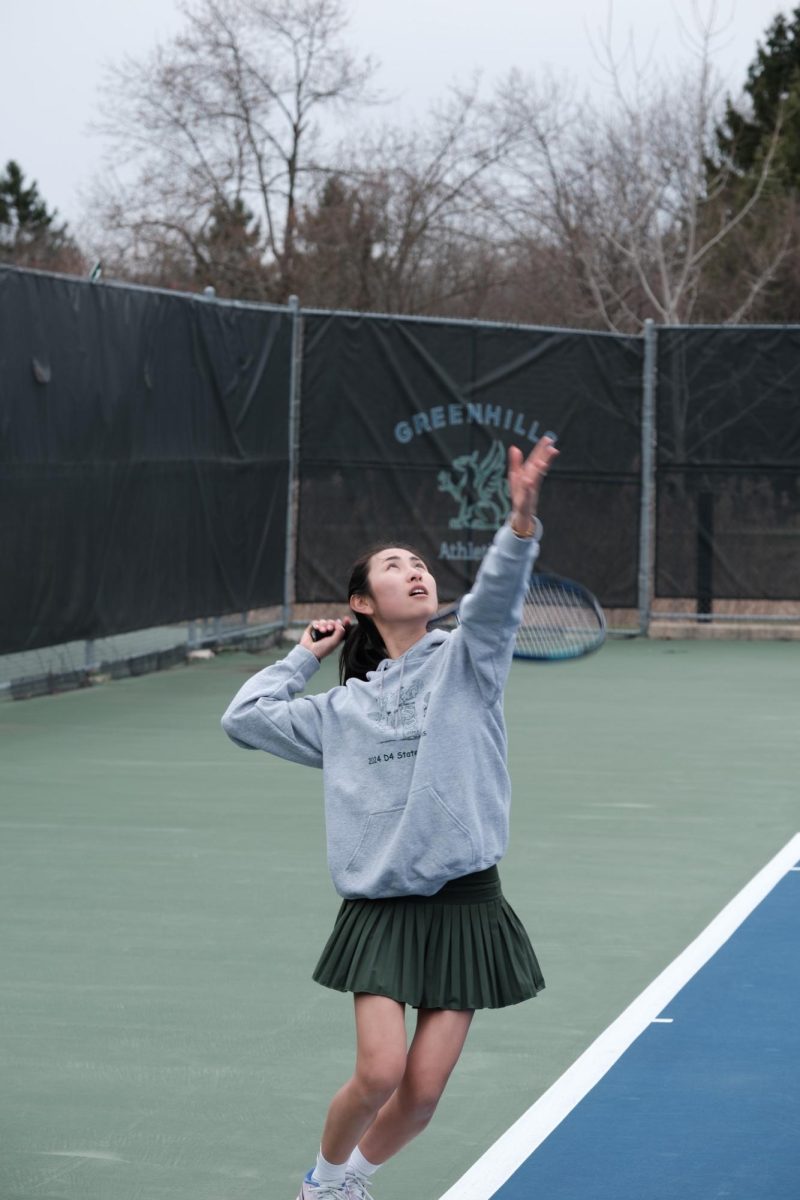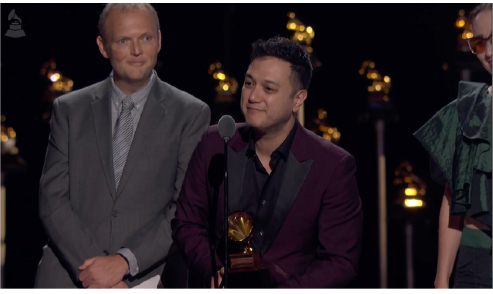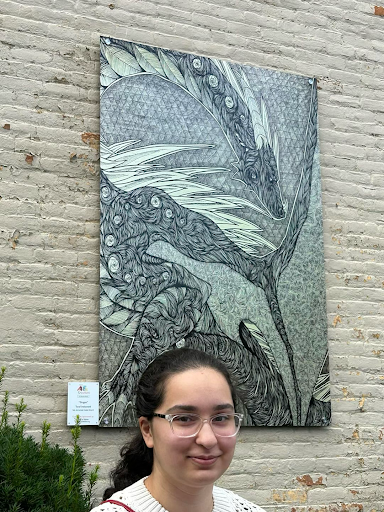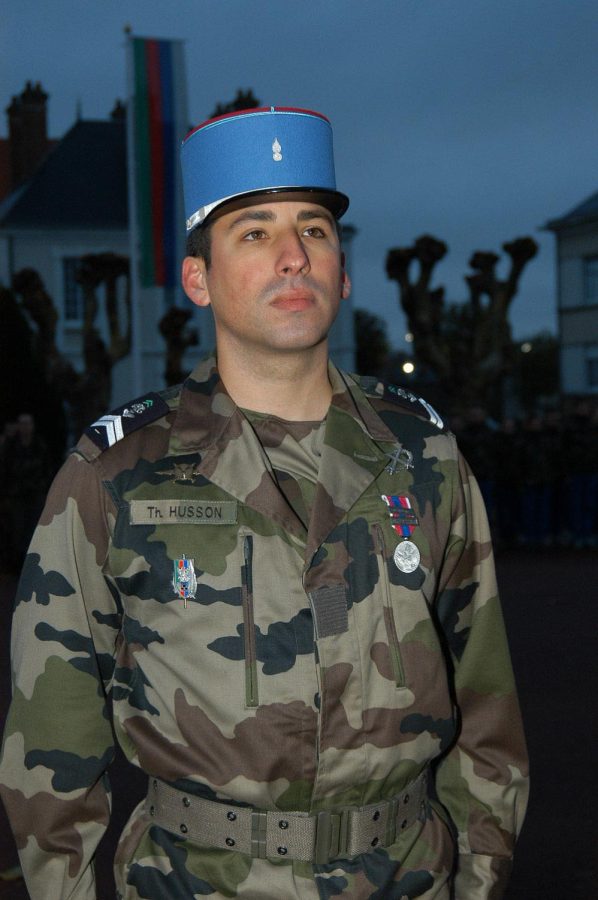Military backgrounds shape faculty members lives, lessons
Photos Courtesy of Thomas Husson, Deano Smith, Neil Donato, and Catherine Renaud
VIVE LA FRANCE Husson on a military base in Tours France being awarded the Silver National Medal in 2005. “I went to teach at a Military academy and I was teaching a leadership course,” said Husson.
May 24, 2022
Husson takes aim for French military
As a special forces operator on etours warzones like the Ivory coast or Bosnia and watch rebel forces through the scope of your sniper rifle. This was what French teacher Thomas Husson serving in the French military. Husson joined the French armed forces in 1997 and went through sniper school and leadership courses. He served in a scout unit, the 13th parachute dragoon regiment. The regiment’s main mission is to gather intelligence behind enemy lines. The unit was first created in the 1600s as a cavalry unit and is one of the oldest units in the French military. He was inspired to join the military because he grew up in a military family.
“My grandfather was a general,” said Husson “He was a commanding officer so he was a war hero.”
Husson toured in places ranging from Senegal, Bosnia, Croatia, Corsica and Africa, many of which were former French colonies. During his eight years as a scout specialist, he collected intelligence on terror groups and various other insurgents. Along with collecting intelligence, his job was to interact and integrate with the local community.
“A lot of patience was involved, it’s very exciting when I say I was in the special forces,” said Husson. “People have Hollywood in mind and all the movies but the reality is that it is very boring.”
On numerous occasions, Husson and his unit were involved in firefights against opposing forces.
“We were in the equivalent of a hummer,” said Husson. “It was armored but not much. I remember we were driving on the dirt road in the middle of a jungle and there was a checkpoint built up that was not supposed to be there and the rebel army. We arrived at the checkpoint and said that they shouldn’t be there and they were not happy with us telling them what to do. So we got the information, we got back in the vehicle and got back on the radio call and suddenly just by the back of the vehicle, I heard, boom boom boom boom boom. It was like somebody throwing pebbles and I said that’s weird and again, boom boom boom. I knew there’s something nasty and then we hear the same sound but flashes coming from the bushes and the jungle and in fact, we were under fire. ”
After sustaining a number of injuries while in the scout unit, Husson left the special forces. Husson said that throughout his time in the special forces, he sustained injuries but was never injured by a gunshot.
“A smoke grenade blew up in front of my face and I got a concussion,” said Husson. “I spent time in the hospital because I also had internal ear damage from the blast. I’m happy that it was just a smoke grenade so there were no fragments, just a big boom and next I knew I woke up in Germany and I was in the military hospital.”
After eight years of military service, Husson left his unit and became a military instructor at a military academy due to various injuries. He left the French military in 2008 and moved to the US.
Submerged submarine tales surface in ESSU
A quarter of a mile below the surface of the Pacific Ocean, then 24 year old Deano Smith, engineering officer on a submarine. Smith, now Dean of Academics, graduated from Utah State with bachelor’s degrees in physics and mathematics in 1986. That same year, he joined the U.S navy and went through several courses that taught him about nuclear propulsion and nuclear engineering. Along with these skills, he learned how to track ships through a periscope and launch torpedoes by calculating its trajectory.
“At submarine officer school, you basically learnt all the tactical stuff,” said Smith. “That’s where my clearance got bumped up from confidential to secret and eventually to top secret and above and at sub school, you learn about classifications and then you start learning about classified information about potential enemies. So I learned a lot about Soviet naval assets that I can’t say.”
After he completed his training, he served on the attack submarine USS Flasher. Flasher was an old generation of attack submarine from the 1960s which was still in service.
“Our mantra was: there ain’t no slack in a fast attack” said Smith. “When we went out to sea during the cold war, our job was to find soviet submarines and be ready to take them out.”
During his career on the Flasher, Smith served mostly in the pacific fleet, where the sub mostly pulled out from San Diego but visited other naval facilities depending on missions.
“We pulled in and out of a base called Adak Alaska from time to time” said Smith “What we would do is go out and do what’s called weekly OPs. So Monday morning, the submarines would go out and we would basically play war games against other ships. And our boat the flasher, even though we were old, what the crew does makes a difference. So not slamming doors, not slamming toilet seats down that actually makes a difference when you’re on the sub, you wear tennis shoes or running shoes in the boat. So the uniform is running shoes or athletic shoes, so they’re quiet for silent running ”
After completing his service on USS Flasher, Smith trained to pilot deep-submergence vessels known as DSRV. He became one of seven people qualified to operate the DSRV at the time. A DSRV is a small deep diving submarine which could operate at depths as much as 20,000 feet.
“They would ride piggyback on a submarine (larger attack and ballistic missile submarines)” said Smith. “They could also go on a ship and it has what we called a mating skirt which can connect to other subs.”
Smith said during his career he had a fun experience where the movie of The Hunt for Red October, was being filmed at the base he was at.
“They actually filmed on a sub base when I was there,” said Smith. “In fact, my executive officer we were walking down a pier on time and he justed started to chew these guys out he was like ‘your hair is unset’, we were just walking and our RXO who is actually a very rough guy starts saying ‘your hair is unset, what are you doing around here’, he just starts laying into the guys and they were like, ‘Sir, Sir, we’re just actors.”
Smith left the navy in 1993 and came to Ann Arbor with his wife because they had both enrolled at the University of Michigan.
DEEP DIVE Smith in Japan next to a deep sea sub in 1992 “I was one of only seven officers(In the U.S. Navy) at the time qualified to operate it,” said Smith.
Everyone needs music, even the Army
When one thinks of the U.S. Army, playing the piano probably doesn’t come to mind. Music teacher Neil Donato joined the U.S army in 1994 after graduating from West Virginia University. He joined and became a piano player for the United States Continental Army Band. But he was hesitant to join the army.
“I was finishing up undergrad and met some people who played in this band, ” said Donato. “We got along pretty well and they said they needed a piano player but initially I was like I got to join the army and I said that’s not gonna happen. They said come visit us at Fort Monroe and check out the band, meet some people, see what you think. So I went down along with the people and saw what the job was gonna be like. After some discernment and long hard thinking about joining the military, I said I think that’s something I want to do. ”
Donato said that the army band was unique because it had several sub groups including the concert band, the ceremonial band, a jazz group and a rock group.
“They need someone playing at a particular level so I had to audition for that specific band” said Donato
Along with playing the piano on several occasions, Donato also played bass drums and other various instruments. He played with many of the various groups in the band and this sometimes changed what he needed to do for that certain band. Donato served in the U.S army from 1994 to 1998 on a four year tour. He left the army in 1998 and under the GI Bill, earned a Master of Music degree at the University of Michigan.
TO THE STARS AND STRIPES Donato touring the U.S with Tradoc rock in the 1990s “Its cool that the army values music as a component and understands its purpose as part of everything they do”.
Renaud plays for the Canadian naval band
As a way to pay for college, science teacher Cathy Renaud joined the Canadian reserve when she was in high school and college in the 1980s. She said she joined so she could pay for her college since the Canadian reserve was a part time job.
“It was a part time job but I was fully involved in it for four or five summers,” said Renaud.
Renaud went through basic training and became a musician in the naval reserve. She would go on the weekends during the school year and the summer.
“We learned to march. We were on Lake Ontario, so we learned to sail.” said Renaud “We learned military drills and then joined the military band and we did the music for all our parades.”
Renaud said that one of the reasons she joined the military other than paying for her college was that she grew up in a military family. She also said that both her parents were in the military and they met in the military. Renaud left while completing her masters degree and said that she left because she did not have the time to commit to it anymore.
FORWARD, MARCH Renaud (far right side) stands with her close friends from the Canadian naval band in the 1980s. “It was a great time,” Said Reanud“It was so much fun”.


















